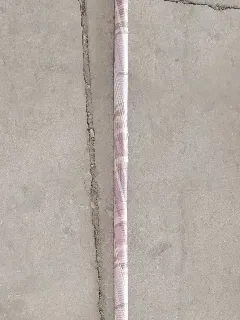loading...
- No. 9, Xingyuan South Street, Dongwaihuan Road, Zaoqiang County, Hengshui, Hebei, China
- admin@zjcomposites.com
- +86 15097380338
- Welcome to visit our website!
Durable Metal Grating Solutions for Enhanced Flooring and Safety Applications
The Importance of Floor Metal Grating in Modern Architecture
In contemporary architecture and industrial design, floor metal grating has emerged as an increasingly important structural and aesthetic element. Characterized by its open design, strength, and versatility, metal grating serves a multitude of purposes across various applications—from industrial facilities to commercial buildings and outdoor spaces. This article explores the significance of floor metal grating, highlighting its benefits, applications, and contributions to modern infrastructure.
Structural Integrity and Safety
One of the primary reasons for the popularity of floor metal grating is its ability to provide structural integrity while ensuring safety. Typically manufactured from durable materials such as steel, aluminum, or stainless steel, metal grating can withstand heavy loads and resist wear and tear over time. Its open design allows for efficient drainage of liquids and debris, reducing the risk of slips and falls in both indoor and outdoor environments. This feature is particularly advantageous in industrial settings, where spills or leaks can pose hazards to workers.
Moreover, the design minimizes the accumulation of snow and ice in outdoor areas, further enhancing safety in winter months. With a range of load-bearing capacities available, metal grating can be customized to suit specific applications, ensuring that it meets safety standards set by regulatory authorities.
Versatility in Design
Floor metal grating's versatility is another key factor contributing to its popularity. Available in various sizes, shapes, and designs, it can be tailored to fit the aesthetic and functional needs of a space. From traditional rectangular grates to more intricate patterns, metal grating can complement various architectural styles, making it suitable for everything from modern office buildings to retro-themed commercial properties.
Metal grating is also compatible with various finishes, such as galvanized, painted, or anodized surfaces, allowing architects and designers to maintain a cohesive color palette across interior and exterior finishes. This adaptability in design means that metal grating can seamlessly integrate into a building’s overall look, enhancing its visual appeal while fulfilling functional requirements.
Applications Across Industries
floor metal grating

The applications of floor metal grating span across numerous industries. In commercial properties, it is often utilized in walkways, platforms, and staircases, providing a safe, slip-resistant surface for foot traffic. Its strength makes it suitable for use in loading bays, where heavy equipment and vehicles frequently traverse.
In industrial settings, metal grating is widely used in manufacturing plants, chemical facilities, and warehouses. It allows employees to navigate equipment and large machinery safely while facilitating the movement of goods. Additionally, metal grating can be found in wastewater treatment facilities where its open structure supports superior airflow and water drainage.
Outside of industrial uses, metal grating is gaining traction in landscaping and outdoor design. Parks, amphitheaters, and public plazas often incorporate decorative metal grating into their designs, enhancing aesthetics and functionality. These grates can serve as effective drainage solutions while also contributing to the overall visual landscape.
Environmental Considerations
In an era where sustainability is paramount, floor metal grating is also appealing from an environmental standpoint. Many metal grating products are made from recyclable materials, and their durability means they have a longer lifespan compared to other flooring options. This durability reduces waste over time, making metal grating a more sustainable choice for construction and renovation projects.
The open design of metal grating also promotes natural drainage and minimizes stormwater runoff, which can be advantageous in reducing flooding in urban areas. By incorporating metal grating into community planning, cities can enhance functionality while addressing environmental concerns.
Conclusion
In conclusion, floor metal grating plays a crucial role in modern architecture and infrastructure, offering a unique blend of safety, versatility, and aesthetic appeal. Its multiple applications across various industries underscore its importance in creating functional and visually pleasing spaces. As sustainability continues to be a driving force in design and construction, metal grating presents a viable solution for meeting both aesthetic and environmental goals. Consequently, it’s clear that metal grating is not merely a practical choice, but a fundamental element in the architecture of the future.
-
The Rise of FRP Profiles: Strong, Lightweight, and Built to LastNewsJul.14,2025
-
SMC Panel Tanks: A Modern Water Storage Solution for All EnvironmentsNewsJul.14,2025
-
GRP Grating: A Modern Solution for Safe and Durable Access SystemsNewsJul.14,2025
-
Galvanized Steel Water Tanks: Durable, Reliable, and Ready for UseNewsJul.14,2025
-
FRP Mini Mesh Grating: The Safer, Smarter Flooring SolutionNewsJul.14,2025
-
Exploring FRP Vessels: Durable Solutions for Modern Fluid HandlingNewsJul.14,2025
-
GRP Structures: The Future of Lightweight, High-Performance EngineeringNewsJun.20,2025
